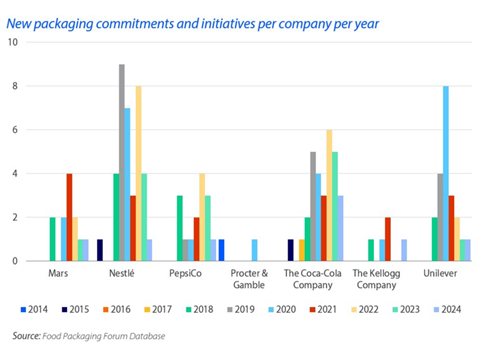
According to a recent report by RaboResearch – Rabobank’s analysis and knowledge team - the demand for recycled polymers has grown in the US and UK markets and is expected to continue to rise in the coming years, primarily driven by state regulation and company pledges in the US and EU-level regulation.
Rabobank states that in the global post-consumer recycled content (PCR) market, over half of PCR consumption is in Europe, and the food and beverage sector, responsible for two-thirds of PCR usage in 2021, is set to expand its demand for sustainable packaging through 2026. It adds that in the EU, regulatory frameworks are ‘the catalysts’ for increased demand for recycled content, and to satisfy this demand, substantial investment in collection and recycling infrastructure is imperative.
According to RaboResearch, implementation of PCR content in the US has been slow due to challenges such as cost, limited availability, and product quality concerns. “Many companies are recalibrating their commitments, now focusing on carbon emissions reduction or extending packaging goals by about five years in most cases. Progress has been made, but the value, scale, purity, and consistency of PCR resins have not yet reached the levels needed for higher adoption rates,” it states.

The U.S Food and Drug Administration (FDA)’s issuance of “letters of no objection” has broadened the approved sources for PCR, but the report highlights a ‘looming’ supply-demand gap for recycled PET (rPET), with consumption possibly outpacing supply growth. RaboResearch warns that without additional actions, this could potentially lead to a future supply-demand imbalance of rPET in the market, commenting that solutions including extended producer responsibility (EPR) schemes and deposit refund schemes (DRS) are proving effective in bolstering high-quality plastic collection for recycling.
The report states that Europe has seen an 18% share of total production in recycled plastics, but despite a 17% capacity growth in 2021, economic headwinds have reduced demand, leaving recyclers underutilized. It also suggests that the EU’s Packaging and Packaging Waste Regulation’s (PPWR) recycled content targets could provide a push for recyclers.
RaboResearch states that to meet the PPWR’s 2030 goals, Europe must triple its recycled plastic production from 2021 levels. Polypropylene and polyethylene need a nearly fivefold increase, while recycled PET volumes must double, with stringent targets for food-grade PET by 2040.
It is hoped that the PPWR mandates will improve collection and sorting systems and prioritize recyclate access for applications that achieve greater circularity, such as closed-loop bottle systems. The report recommends that investments must also consider the growing demand for recycled content in other sectors, such as the automotive industry, to mitigate interindustry competition.

In March, the packaging industry shared its views on the PPWR deal following a provisional agreement between the European Parliament and Council, praising action against ‘forever chemicals’ and eventual reviews of biobased plastic content, yet criticizing the removal of reuse targets for takeaway food and lobbying for single-use paper.
Plastics manufacturers opposed the recyclate, paper and board rules later that month, with IK Industrievereinigung Kunststoffverpackungen arguing that ‘material-discriminatory’ measures remain in the provisional Packaging and Packaging Waste Regulation, and it is feared that resultant loopholes will exacerbate trade conflicts and adverse environmental effects.
In April, the European Parliament PPWR vote saw packaging bans for fresh produce from 2030, limits on PFAs, crackdowns on empty space, and high collection and reuse targets among the measures adopted. Industry players were broadly optimistic that the text would help harmonize the Single Market, but feared the consequences of misplaced restrictions.
If you liked this story, you might also enjoy:
How are the top brands progressing on packaging sustainability?
Sustainable Innovation Report 2024: Current trends and future priorities
Reuse vs. single use – which is better for the environment?
The ultimate guide to global plastic sustainability regulation












No comments yet